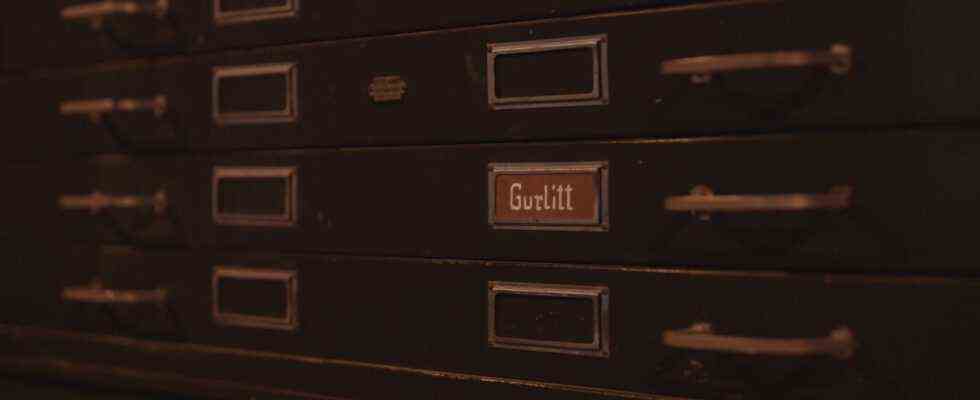As of: 12/29/2021 8:43 a.m.
The dispute over how to deal with art stolen during the Nazi era has reached the Swiss government: it is now calling for a commission of historians. The major art houses in the country have long been taking different paths.
The Swiss media report new developments in the dispute over Nazi looted art in museums almost every day. Above all, the dispute over the Bührle Collection, one of the most important private art collections, is taking on “bizarre forms” according to the “Neue Zürcher Zeitung” newspaper. To this day, the origin of many of the 203 paintings in the Emil Bührle Collection, which is shown there, has not been clarified. During the Second World War, the Swiss arms dealer of German origin used his Nazi contacts to acquire stolen pictures from Jewish property. Even after 1945 he bought looted and refugee property on a large scale. In the room there is the accusation of a lack of transparency by the Bührle Foundation towards the public.
The heirs of the Jewish businessman Max Emden recently demanded the return of the Monet painting “Field of Poppies”: Emden had to sell the picture in a “political financial emergency”. The Bührle Foundation contradicts this in this case as well.
In a sensational press conference in mid-December, the outgoing director of the Bührle Foundation, Lukas Gloor, claimed that in Switzerland one could not in principle assume that cultural assets were “withdrawn as a result of persecution.” There was also “a completely normal art trade” during the Second World War. And anyway, in Switzerland Jews were never persecuted by the state.
Limbach Commission as a model
Minister of Culture Alain Berset calls for an independent historians’ commission to arbitrate with the heirs in possible disputes. The social democrat is doing a U-turn. Because so far the four-party coalition in Bern has wanted nothing to do with an arbitration board based on the model of the German Limbach Commission.
The heirs of Jewish art collectors can turn to the “Advisory Commission in connection with the return of cultural assets seized as a result of Nazi persecution, especially from Jewish property”, founded by the former constitutional judge Jutta Limbach, if they believe that their family’s art objects are in a German museum. The Commission then examines the historical facts and makes a proposal to both sides. So far, an amicable agreement has almost always been reached. The paintings were either returned to the family or their current market value was reimbursed.
Gurlitt collection went to Bern
The Kunstmuseum Bern has already proceeded in exactly the same way on its own initiative: Almost ten years after the spectacular art find in Cornelius Gurlitt’s private apartment in Munich, it wants to return some works of art to the rightful heirs.
Gurlitt’s father Hildebrand Gurlitt was a buyer for the planned “Führermuseum” in Linz from 1943 – and secretly started his own collection. In total, he left his son around 1,600 works of art. Before Cornelius Gurlitt died in 2014, he bequeathed his collection to the Kunstmuseum Bern.
In the years since then, the Bernese have researched the origin of the pictures from the Gurlitt collection. Now they want to return the two works by Otto Dix, “Dompteuse” and “Dame in der Loge”, to the community of heirs Ismar Littmann and Paul Schäfer. This is only to be the beginning: A further 36 works are also to be restituted.
The two Dix works “Dame in der Loge” and “Tompteuse”, which belong to the art that Gurlitt has hoarded.
Image: Kunstmuseum Bern
Decide even if there are gaps in knowledge
With its approach, the Kunstmuseum Bern differs significantly from the behavior of the Kunsthaus Zürich – because the legal situation is by no means clear with the returns that have now been announced.
So far, gaps in knowledge have generally been further researched and no decision has been made. But it shouldn’t go on like this: the museum still wants to return pictures. “We want to make decisions even if there are gaps in our knowledge if there are no more substantial research paths. Also because the probability of clear research results is getting smaller and smaller,” said Marcel Brülhart, the board of trustees and responsible for the Gurlitt dossier, and Nina Zimmer, director of the Kunstmuseum Bern , their position together.
The Kunstmuseum Bern had therefore been calling for an independent commission to be set up since 2015 and expressly welcomes the current discussion about historical responsibility – also when it comes to neutral Switzerland as an art trading center and hub for cultural goods.

